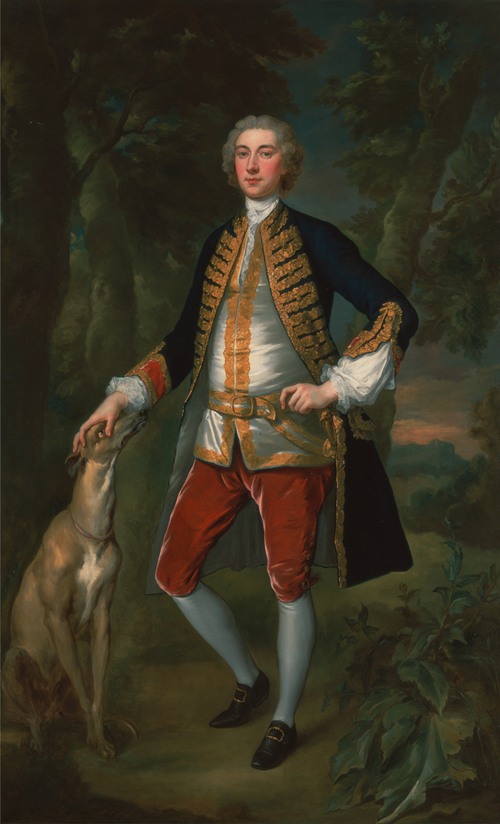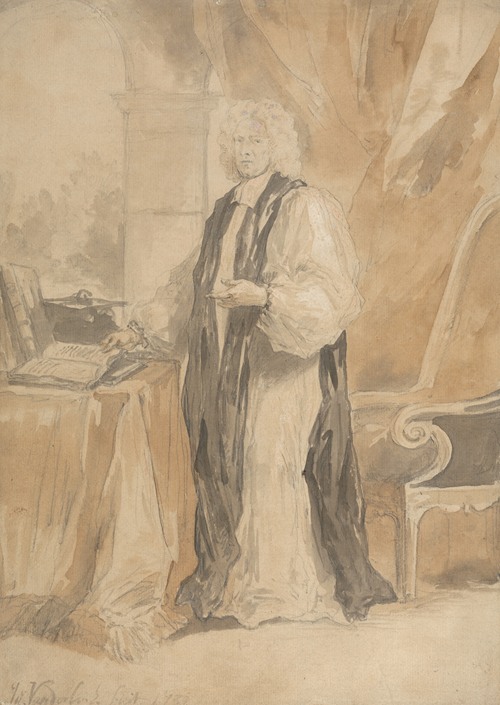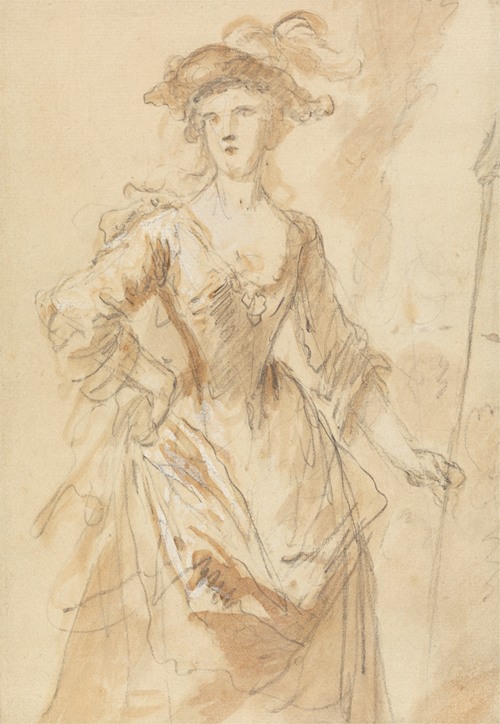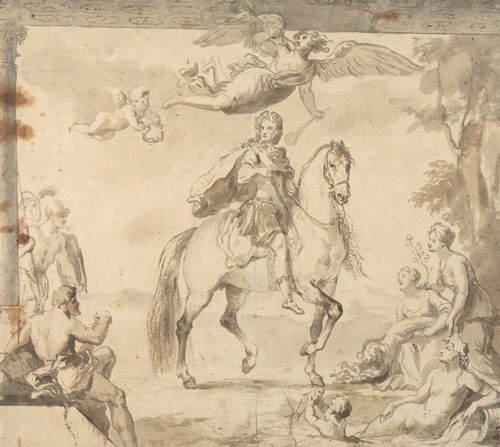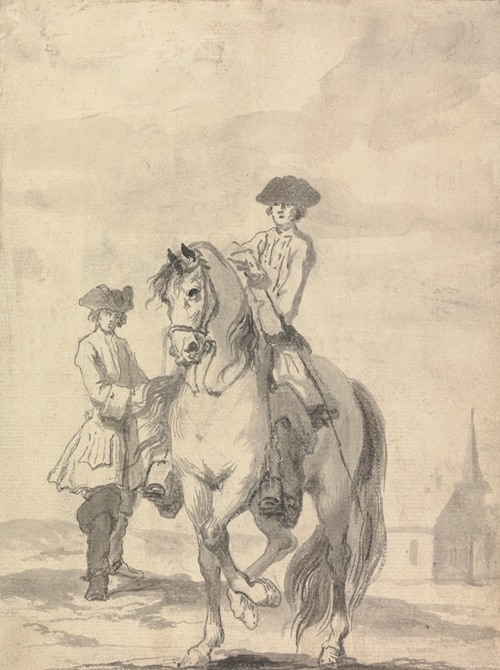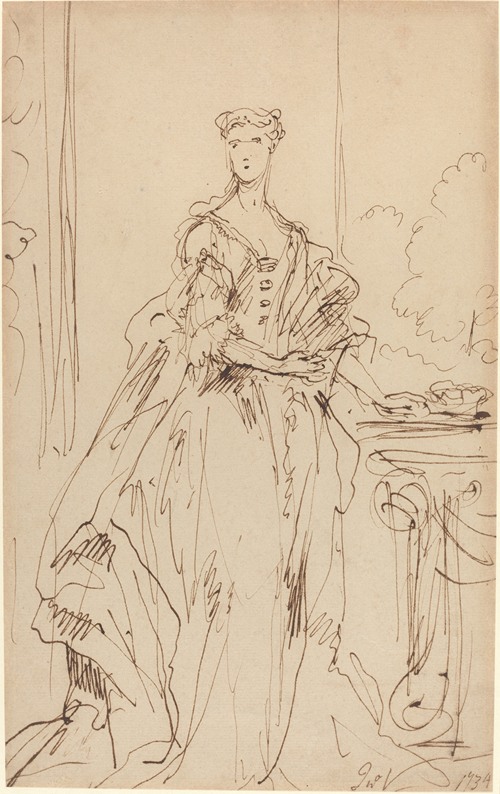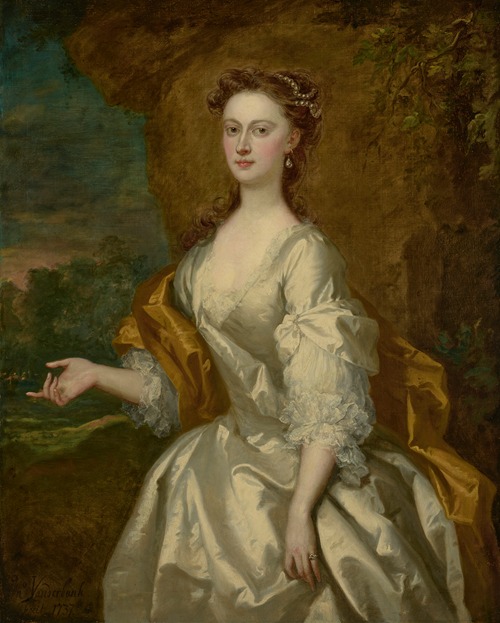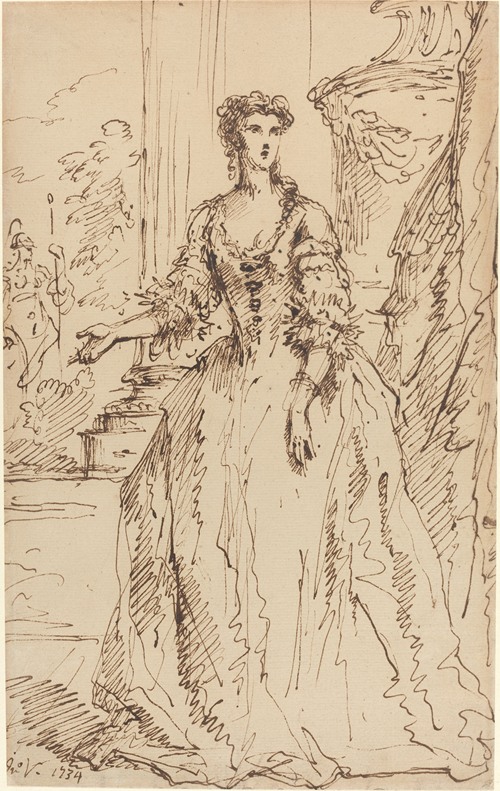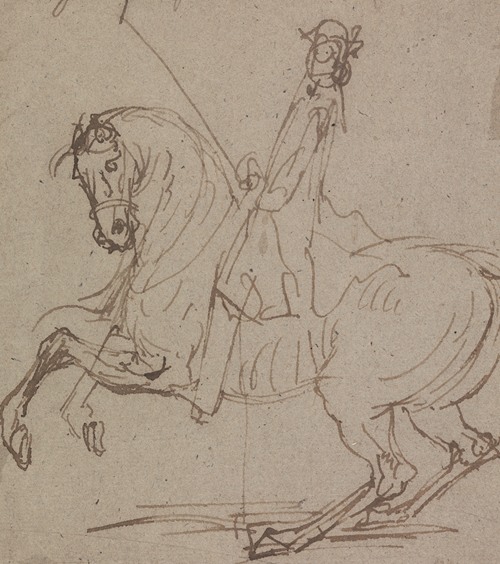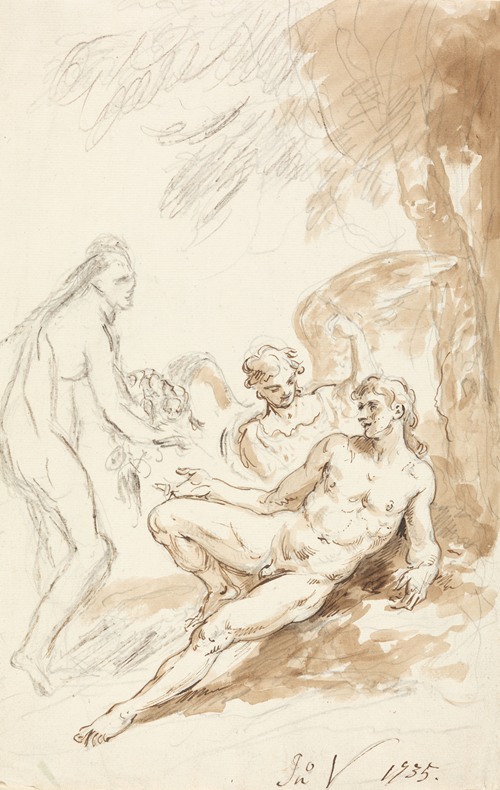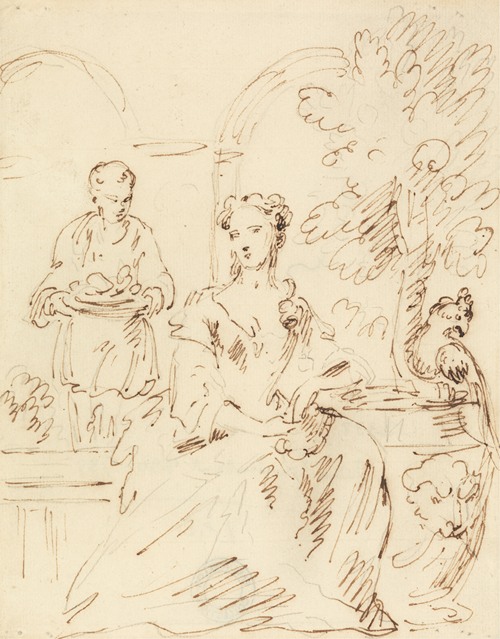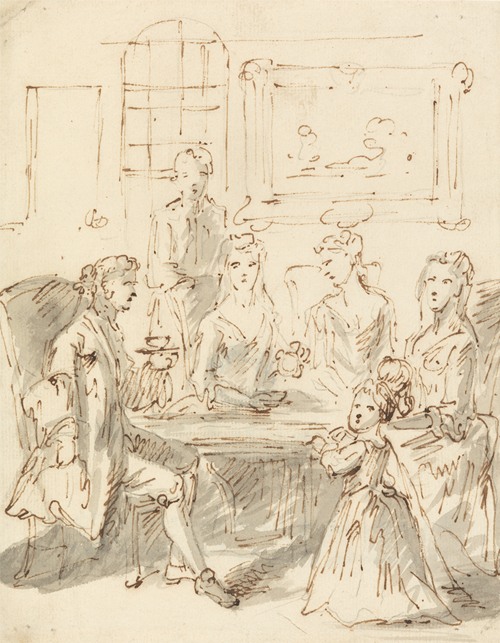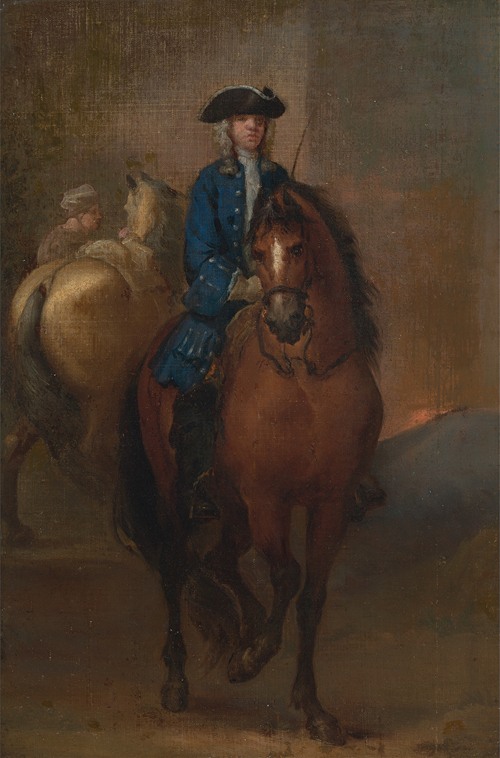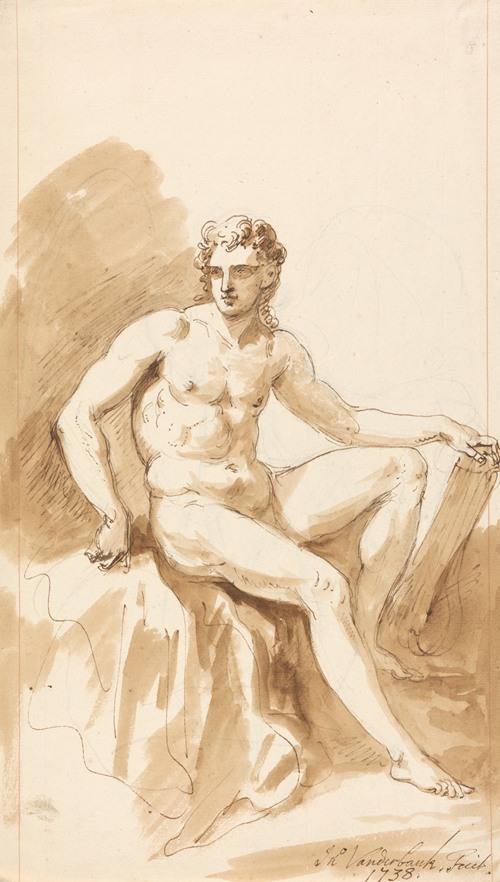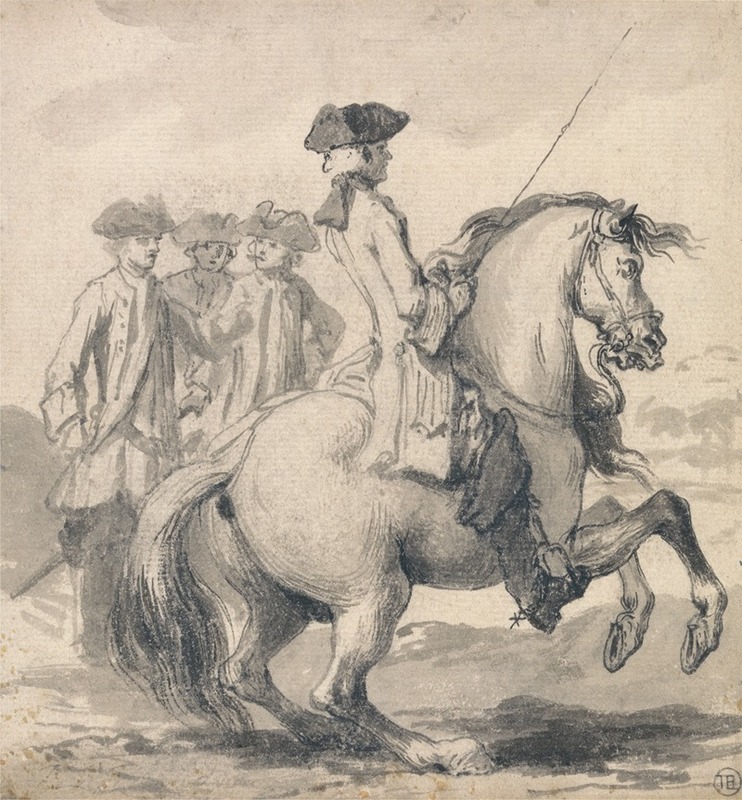
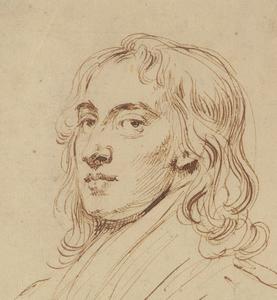
John Vanderbank was a leading English portrait painter who enjoyed a high reputation during the last decade of King George I's reign and remained in high fashion in the first decade of King George II's reign. George Vertue's opinion was that only intemperance and extravagance prevented Vanderbank from being the greatest portraitist of his generation, his lifestyle bringing him into repeated financial difficulties and leading to an early death at the age of only 45.
Vanderbank was born in London on 9 September 1694 into an artistic family, the eldest son of Sarah and John Vanderbank Snr, a naturalised Huguenot immigrant from Paris and, since 1679, well-to-do proprietor of the Soho Tapestry Manufactory and Yeoman Arras-maker to the Great Wardrobe, supplying the royal family with tapestries from his premises in Great Queen Street, Covent Garden. John Vanderbank senior was the leading tapestry weaver in England throughout his life and by the introduction of the lighter and less formal style, now referred to as chinoiserie, he exercised a powerful influence on the style of the Soho weavers.
John Vanderbank first studied composition and painting under his father and then the painter Jonathan Richardson, before becoming one of Sir Godfrey Kneller's earliest pupils in 1711 at his art academy in Great Queen Street, neighbouring his father's tapestry workshop. After Sir James Thornhill took over from Kneller in 1718, Vanderbank continued his studies there for two years before founding an academy of his own in 1720.
Vanderbank's younger brother, Moses Vanderbank, was also an artist and draughtsman, although besides a family group depicting three children (1733), three altarpieces in the 12th century church at Adel near Leeds, and a portrait of a young child with a lamb (1743), his painted works are exceptionally rare. He succeeded his father to the post of Yeoman Arras-maker to the Crown in 1727.
The family's relationship to the leading late 17th century painter and engraver Peter Vanderbank is uncertain although the Parisian origins of both, the similarity of profession, the facial similarities of Kneller's chalk portrait of Peter Vanderbank and John Vanderbank's self-portrait drawing, and John Vanderbank senior's ownership of land in Hertfordshire where Peter Vanderbank married and spent his final years are suggestive.
Vanderbank worked chiefly as a portraitist, also painting some allegorical subjects, and as an illustrator. He began his portrait practice in 1719 with a large equestrian portrait of Charles Spencer, 3rd Duke of Marlborough, developing a free, painterly style, his faces admirably drawn with what Vertue describes as ‘greatness of pencilling, spirit and composition’, and partly derived from his admiration for Rubens and Van Dyck, many of whose works he had studiously copied. His early portraits continued the vigour and grand style of Kneller but with a more vital and energetic drawing than his contemporaries. He used a bold pigmentation in the flesh where pink tones are painted thinly over the cooler greys of the ground layer to suggest glowing skin, the technique of colori cangianti derived from Rubens who was himself inspired by the artists of the seicento. Equally distinctive is the way in which mid-tones are represented by unpainted areas of grey-green primer and the placing of pure red pigments for highlights.
On 12 July 1723 Vanderbank married the actress Ann Hardaker (b 1703) at St Mary's Church, Islington, the daughter of William Hardaker and Sibella (née Mountjoy) of Holborn, London. She was deemed by Vertue to be ‘a Vain empty wooman’ though, judging by the portrait miniature by Christian Friedrich Zincke and Faber's mezzotint from her portrait by her husband, she was certainly strikingly attractive. The Hardakers had links to the West Riding of Yorkshire where Vanderbank's older sister Elizabeth had married John Hotham in 1715. This northern connection might have been the source of Moses Vanderbank's commission in Leeds. Vertue noted that Vanderbank ‘left no children behind him by this wooman’ and indeed none has ever been traced from the marriage.
Vanderbank died of consumption (tuberculosis) in Holles Street on 23 December 1739 aged 45 and was buried in St Marylebone Parish Church, Westminster. In his will, dated 19 December 1739 and made four days before he died, he leaves his entire estate "unto my dear wife". Anne Vanderbank died in 1750 and was buried at St George Hanover Square
